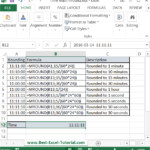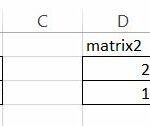How to Run Cohort Analysis in Excel
Cohort analysis is a valuable technique that helps track and analyze the behavior of specific groups of users over time. By using cohort analysis, businesses can gain insights into user retention, engagement, and behavioral patterns.
While there are specialized tools for this analysis, Excel provides a versatile platform to perform cohort analysis effectively. Here’s how you can conduct cohort analysis in Excel.
Table of Contents
What is Cohort Analysis?
Cohort analysis involves grouping users based on a common characteristic and tracking their behavior over time. These groups, called cohorts, can help you uncover trends in user engagement and retention.
Businesses, marketers, and product developers use cohort analysis to better understand user behavior and make data-driven decisions.
Types of Cohort Analysis
There are several types of cohort analysis you can perform, depending on the aspect of user behavior you wish to track:
- Time-Based Cohorts: These groups are created based on a specific time period, such as by month or quarter.
- Behavior-Based Cohorts: These cohorts are formed based on a particular action, such as signing up for a service or making a purchase.
- Attribute-Based Cohorts: Users are grouped by shared characteristics like age, location, or subscription type.
Each type provides unique insights, helping answer specific questions about your user base, such as how certain groups engage over time or how long they remain active.
How to Build a Cohort Analysis in Excel in Five Steps
1. Data Preparation
Start by organizing your data with the required attributes and timestamps. For example, if you’re tracking user engagement, your dataset should include columns for user IDs, signup dates, and actions like purchases or logins. Ensure that the data is clean and structured properly, as this will be critical for accurate cohort analysis.
2. Create Cohorts
Define the criteria for creating your cohorts. If you’re performing a time-based cohort analysis, you may want to group users based on the month they signed up or made their first purchase. For behavior-based or attribute-based cohorts, you could group users by their actions or shared characteristics such as demographics or location. Assign each user to a specific cohort.
3. Calculate Metrics
Decide which metrics are relevant for your analysis. Common metrics include retention rate, conversion rate, or average revenue per user. Use Excel’s built-in functions such as COUNTIF, SUMIFS, and AVERAGEIF to calculate these metrics for each cohort over specific time intervals. For example, you might track how many users from each cohort continue using a product in the months following their signup.
4. Build a Cohort Table
Construct a cohort table where each row represents a different cohort and each column represents a time period (e.g., month or week). Populate the table with the calculated metrics for each cohort. This allows you to compare how each cohort performs over time and identify trends in user retention or engagement.
5. Visualize Results
Once you’ve populated your cohort table, use Excel’s charting tools to visualize the results. Line charts can help you track changes in user behavior over time, while bar charts or heatmaps can reveal patterns in retention or engagement across cohorts. Visualizations make it easier to understand how user behavior evolves and to identify trends that might otherwise be hidden in the raw data.
Cohort Analysis in Excel: An Overview
Performing cohort analysis in Excel enables you to uncover meaningful insights without needing specialized software. By preparing your data, creating cohorts, calculating metrics, and building a cohort table, you can track user behavior effectively. Visualizing the results with charts and graphs makes it easier to interpret the data and make informed decisions.
Example: Retention Rate Cohort Analysis
Let’s say you’re analyzing user retention for an online platform. You can group users by their signup month and track how many of them remain active over the next six months.
In your cohort table, each row represents users who signed up in a particular month, and each column represents the percentage of users still active after a specific number of months.
By visualizing this data, you can spot trends and see which cohorts show the highest or lowest retention rates over time.




Leave a Reply